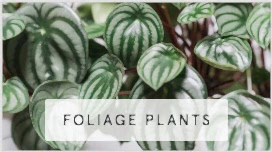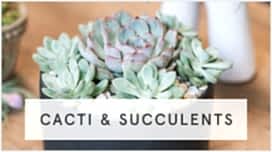When you want to style your home with organic elements, plants can enrich your home's exterior and interior. Plants benefit you in many ways by providing holistic green spaces that reduce stress and even purify the air. While each plant has its own care requirements that include frequency of watering and fertilization requirements, these needs can fluctuate throughout the year.
Overall, in the summer, plants need more water and nutrients to thrive. Whether you keep plants indoors or outdoors this season, your plants will benefit from adjustments to their care routine so that they can be healthy where they are planted.
Why Do Plants Need Different Care in the Summer?
Throughout the year, plants go through different stages of development. They tend to go dormant in the winter and during arid conditions. This process starts as the weather begins to change, which prompts plants to prepare their soft tissue to withstand the harsh conditions, which include dry air, freezing temperatures, excessive heat, and a shortage of water and nutrients. Growth slows down because plants stop using energy to grow but instead store energy to be strong enough to survive the hard times.
Shorter days and cooler temperatures cause both indoor and outdoor plants to need less fertilization and water. Extreme heat or drought can also force a plant to enter a state of dormancy. Consider it the "starvation mode" of plants simply to ensure they survive the harsh conditions. When favorable weather returns, plants shift their focus on growing, flowering, and producing seeds for future reproduction. This requires a lot of energy and nutrients, so watering, fertilization, and sunlight requirements change.
Sad Plant Signs
If you find your plants starting to look sad during the summer, you will need to adjust their care regimen. Here are some signs that your plant needs to have a change in its watering, sunlight, or fertilization schedule in the summer:
Wilting plant: Not enough water
Scorched leaves: Too much sun
Yellowing leaves: Too much water
Limp foliage: Too much sun
Leggy stems, pale leaves, dropped or dead leaves: Not enough sun
These are just general guidelines. Sad plant signs can differ between species, so it's essential to research the symptoms your specific plant is experiencing to create a proper game plan. To help you cultivate the best plants this year, here are five summer care tips for them.
1. Fulfill Needs Specific to Outdoor Plants
Caring for outdoor plants in the summer is simpler than tending to indoor plants. This is because outdoor conditions resolve a lot of the fussy plant needs, such as humidity levels and natural light. However, there are still things to look out for, such as placing delicate plants under partial shade and using a greenhouse when necessary to protect against frost or pests.
You will also need to monitor the soil quality, fertilize as needed, and ensure that you don't overwater your plants. Rainfall will assist you with this task, so you can merely stay on top of how damp the soil feels to the touch. Follow the directions on your seed packet, and you'll be good to go! And remember, when you prep your outdoor garden in the early spring through aeration, weeding, and fertilization, your outdoor plants will thrive in the summer.
2. Increase Watering Frequency for Indoor Plants
If you have indoor plants, there's a good chance that you have a low-needs species like a golden pothos or a spider plant. Though you have to try very hard to kill these plants, there are times when your indoor plants can encounter some trouble, especially when their watering needs increase in the summer. Since summer is hotter, it will cause more moisture to evaporate and make your plants thirstier than in the winter.
Support your indoor plants by increasing their water intake to its maximum watering recommendations. For most indoor plants, you can press your index finger one inch deep into the top of the soil. If it feels dry, then it most likely needs to be watered. Be sure to direct the water to the soil around the plant's base so it can soak up all the goodness!
3. Increase Fertilization Frequency
While it is easy to take care of indoor plants in the winter due to their dormant states, house plants in the summer are programmed to grow faster and crave more nutrients. Summer brings more sunlight into the home, forcing your indoor plants into rapid growth spurts. Just like a hungry toddler eats a lot of snacks during stages of fast growth; likewise, your growing plants are craving more sustenance. Sometimes, plants may grow so quickly that you will need to repot them during the summer too!
Your indoor plants are busy making flowers and seeds and are growing their leaves large enough to photosynthesize more nutrition from the sun. Increase the fertilization frequency to the highest recommended cadence to meet your plant's changing needs. You will find this information on your specific plant's care recommendations.
Tip: a benchmark fertilization frequency is once per month, but it may be less frequent depending on your plant's unique needs.
4. Adjust Sun Exposure
When the days are shorter in the winter, your plant needs to be placed in the sunlight as much as possible. In the winter, the sunlight is less direct, and your plant needs as much light as possible to thrive. But summer's long days mean that you might need to temper the sunlight some plants get throughout the day.
For example, more delicate plants can burn when left in direct sunlight for too long. Species like the golden pothos do the best in indirect sunlight, so placing them in a living room where the window's light won't directly touch the leaves is a great solution. You may also choose to place a sheer curtain over the window, so the sunlight is less intense. A south-facing window will also offer more shade than the sun in the summer, so moving your plants there during the season will help with the scorching leaf issue.
5. Keep Temperature and Humidity Stable Throughout the Year
Houseplants are more delicate than outdoor plants and prefer stable conditions. Do your best to ensure that you keep your house between 70-80 degrees Fahrenheit and that there is some degree of humidity. This isn't a problem in the summer, as most places are more humid, but this may require using a humidifier in the winter. Use a spray bottle to mist the air around the plant if it seems like it needs more humidity.
Fill Your Home with Green
At Plantshed, we have a variety of beautiful foliage plants that can enrich your home with jungle vibes. You can also find everything you need to care for them this summer from our curated pots and planters, fertilizers, and potting soil collection.













